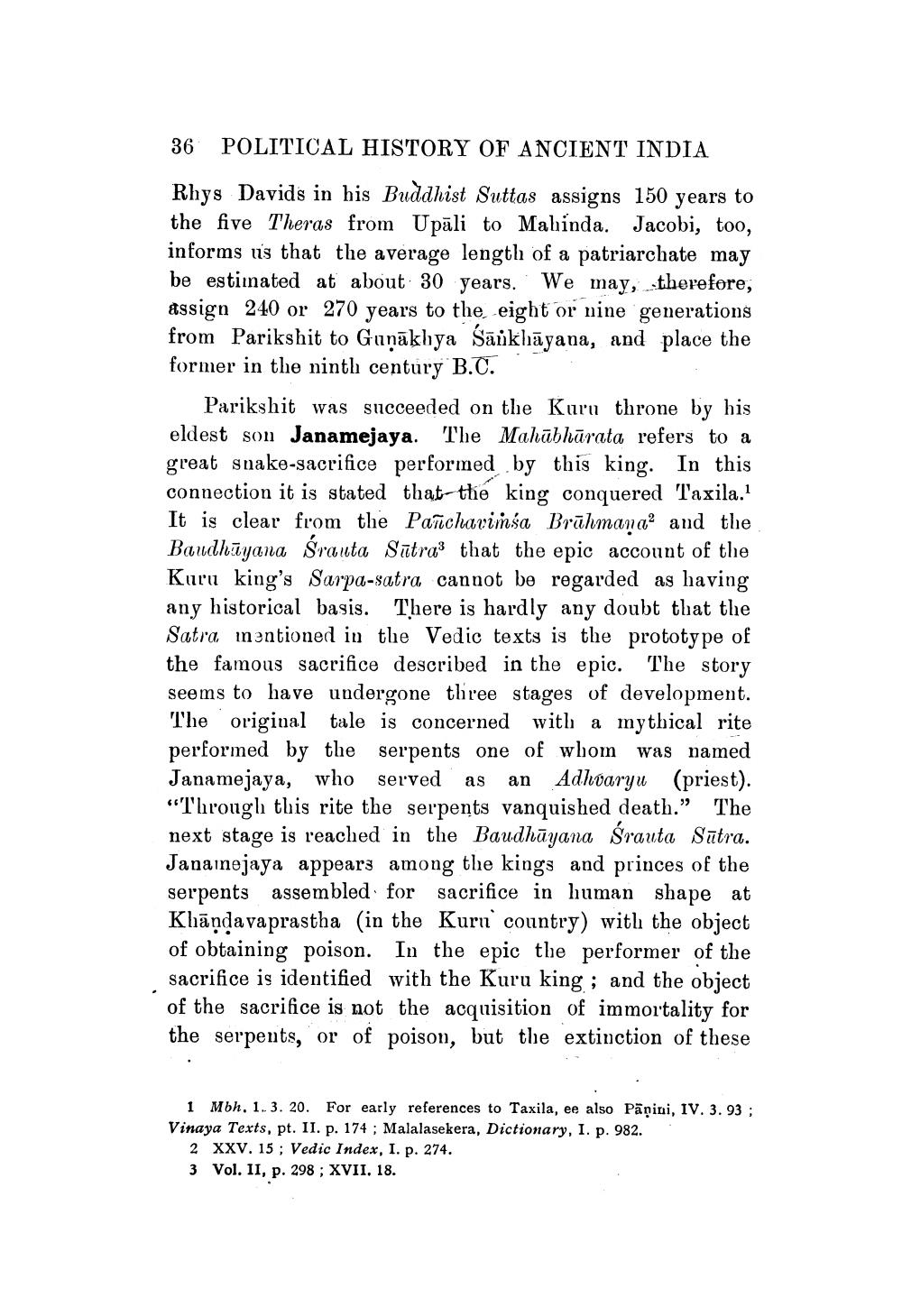________________
36 POLITICAL HISTORY OF ANCIENT INDIA Rhys Davids in his Buddhist Suttas assigns 150 years to the five Theras from Upāli to Mahinda. Jacobi, too, informs us that the average length of a patriarchate may be estimated at about 30 years. We may, therefore, assign 240 or 270 years to the eight or nine generations from Parikshit to Guņāklıya Sārklāyana, and place the former in the ninth century B.C.
Parikshit was succeeded on the Kuru throne by his eldest son Janamejaya. The Mahābhārata refers to a great snake-sacrifice performed by this king. In this connection it is stated that the king conquered Taxila. It is clear from the Panchavimśa Brāhmana? and the Baudhāyana Srauta Sūtra3 that the epic account of the Kuru king's Sarpa-satra, cannot be regarded as having any historical basis. There is hardly any doubt that the Satra inentioned in the Vedic texts is the prototype of the famous sacrifice described in the epic. The story seems to have undergone three stages of development. The original tale is concerned with a mythical rite performed by the serpents one of whom was named Janamejaya, who served as an Adhvaryu (priest). "Through this rite the serpents vanquished death.” The next stage is reached in the Baudhāyana þrauta Sūtra. Janainejaya appears among the kings and princes of the serpents assembled for sacrifice in human shape at Khāņdavaprastha (in the Kurn country) with the object of obtaining poison. In the epic the performer of the sacrifice is identified with the Kuru king; and the object of the sacrifice is not the acquisition of immortality for the serpents, or of poison, but the extinction of these
1 Mbh. 1. 3. 20. For early references to Taxila, ee also Pāņini, IV. 3. 93 ; Vinaya Texts, pt. II. p. 174 ; Malalasekera, Dictionary, I. p. 982.
2 XXV. 15; Vedic Index, I. p. 274. 3 Vol. II, p. 298 ; XVII. 18.




